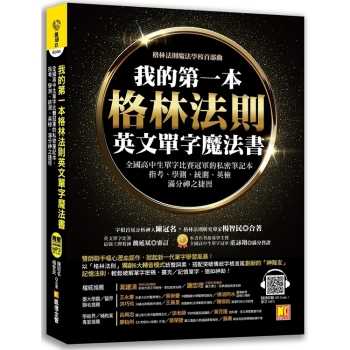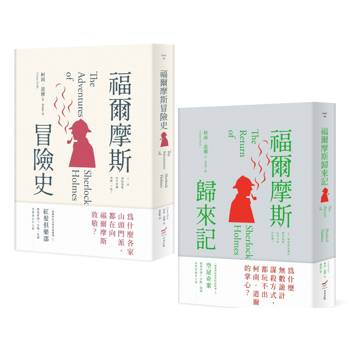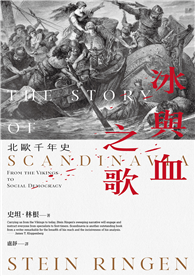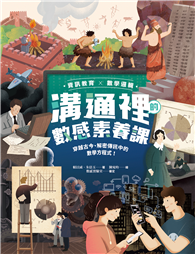| FindBook |
|
有 8 項符合
雷逸婷 主編的圖書 |
![現代美術期刊NO:212期[113/08]](https://media.taaze.tw/showProdImage.html?sc=11101045976) |
$ 427 | 現代美術期刊NO:212期[113/08]
作者:雷逸婷 主編 出版社:台北市立美術館 出版日期:2024-08-01 語言:繁體書 |
![現代美術[季刊]NO:205期[111/06]](https://www.iread.com.tw/ProductFile/T0090000/B000718782/B000718782-B.jpg) |
$ 171 | 現代美術[季刊]NO:205期[111/06]
作者:雷逸婷 主編 出版社:臺北市立美術館 出版日期:2022-07-01 語言:繁體/中文 |
![現代美術[季刊]NO:205期[111/06]](https://media.taaze.tw/showProdImage.html?sc=11100987596) |
$ 171 | 現代美術[季刊]NO:205期[111/06]
作者:雷逸婷 主編 出版社:台北市立美術館 出版日期:2022-07-01 語言:繁體書 |
![現代美術[季刊]NO:199期[109/12]](https://www.iread.com.tw/ProductFile/T0090000/B000670564/B000670564-B.jpg) |
$ 171 | 現代美術[季刊]NO:199期[109/12]
作者:主編 廖春鈴 編輯 曾炫淳、雷逸婷(啟蒙.八○) 出版社:臺北市立美術館 出版日期:2020-12-01 語言:繁體/中文 |
![現代美術[季刊]NO:199期[109/12]](https://media.taaze.tw/showProdImage.html?sc=11100927767) |
$ 171 | 現代美術[季刊]NO:199期[109/12]
作者:主編 廖春鈴 編輯 曾炫淳、雷逸婷(啟蒙.八○) 出版社:台北市立美術館 出版日期:2020-12-01 語言:繁體書 |
![另一種目線―王信攝影展[精裝]【金石堂、博客來熱銷】](https://img.findprice.com.tw/book/9789860516623.jpg) |
$ 2090 | 另一種目線―王信攝影展[精裝]【金石堂、博客來熱銷】
作者:雷逸婷 主編 出版社:臺北市立美術館 出版日期:2016-12-01 語言:繁體中文 規格:486頁/27*23cm  共 3 筆 → 查價格、看圖書介紹 共 3 筆 → 查價格、看圖書介紹
|
![現代美術期刊NO:213期[113/12]](https://www.wunanbooks.com.tw/NewPhoto/300/338/44/S_30033844.jpg) |
$ 90 | 現代美術期刊NO:213期[113/12]
作者:雷逸婷 主編 出版社:臺北市立美術館 |
![現代美術期刊NO:212期[113/08]](https://www.wunanbooks.com.tw/NewPhoto/300/338/43/S_30033843.jpg) |
$ 720 | 現代美術期刊NO:212期[113/08]
作者:雷逸婷 主編 出版社:臺北市立美術館 |
|
|
臺北市立美術館將為開啟台灣1970年代報導攝影先河的攝影家王信舉辦大型回顧展,以「另一種目線」為名,由館方策展人雷逸婷擔綱策劃,以王信作品計畫與創作時間為軸,邀集其自1970年代以來各個階段具代表性的14個主題與系列,展現她近50年的創作探索與成就。為能理解創作脈絡與理念,展覽也包括作品導言、搭配文獻紀錄的藝術家大事紀、作品多媒體及紀錄片,展覽希望傳達王信個人的著眼取向和視角,並展現其攝影觀與行事風範。 王信相信,「映像也是一種語言」。相機對她而言,不只是記錄的工具,也是表現的工具。她以人道關懷為出發,為少數原住民文化與臺灣城鄉庶民文化的消逝做見證,傳達不同文化差異應予尊重的觀點。她重視影像表達的敘事性,硬調子的黑白映像有著沉鬱孤寂的質感,以及準確而溫暖的情感。作品在粗粒子、暗色調的攝影質感中,除了兼具報導與創作,蘊藏其中的是對於人性的掙扎與期許。王信的作品大致分為兩個類型,一類是主題嚴肅且意圖明確的系列報導攝影;另一類是美術攝影,強調主觀的剎那間印象,屬於個人感性與唯美的生活美學。從各個時期的攝影作品中,無論是理性出發與社會關懷,或是充滿意念與象徵性的情感表達,可以察覺攝影家也置身其中,包括拍攝時的意圖與動機,鏡頭背後的意涵,以及面對被攝者的態度與觀點。
Taipei Fine Arts Museum presents “Line of Vision,” a major solo exhibition of pioneering documentary photographer Wang Hsin. The exhibition, curated by Yi-ting Lei, encompasses 50 years of exploration and achievement. It is arranged chronologically according to 14 themes reflecting various stages of Wang’s career, from the 1970s, when she first rose to prominence in Taiwan, to the present. To provide context to the works, the exhibition includes introductory texts, printed documentation, a timeline, a multimedia presentation and a documentary film, conveying Wang Hsin’s unique visual orientation, her philosophical beliefs about photography, and her personal character. “Images are a kind of language,” Wang Hsin believes. For her, the camera is not merely a documentary device, but a tool of expression. Motivated by care for human beings, she has set out to bear witness to the endangered cultures of indigenous people and the common folk of city and countryside alike. She seeks to communicate the need to respect the differences among cultures. Likewise, she treasures the narrative nature of photographs. The hard tone of her black-and-white images has a melancholy, lonely quality and a precise yet warm feeling. Her works possess both documentary and creative value. Within their coarse granularity and dark hues lie the struggle and hope of humanity. Wang’s works may be broadly divided into two categories. One is documentary images with serious themes and clear purposes. The other is fine art photography, expressing a life aesthetic of personal feelings and beauty. In her photographs from every era, whether made with a rational approach motivated by social concern or an emotive expression brimming with thought and symbolism, we can sense the presence of the photographer within them – her intentions and motivations, the meaning that lies behind the lens, her attitude and her viewpoint regarding her subjects.
- 出版社: 台北市立美術館 出版日期:2016-12-01 ISBN/ISSN:9789860516623
- 語言:繁體中文 裝訂方式:精裝 頁數:486頁 開數:27*23
- 類別: 中文書> 政府考用> 政府出版品
|








